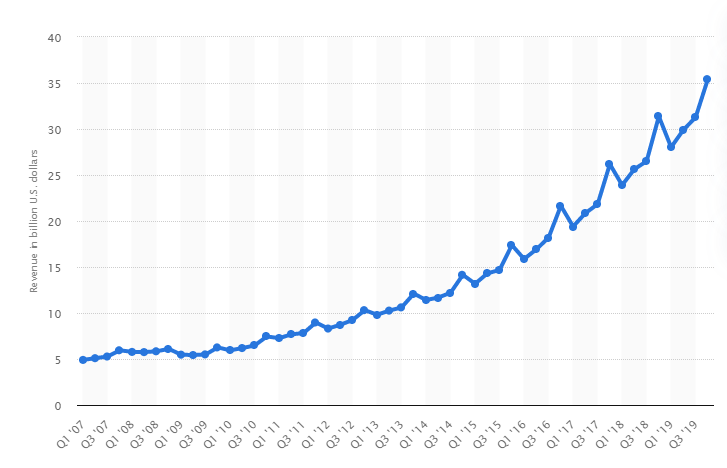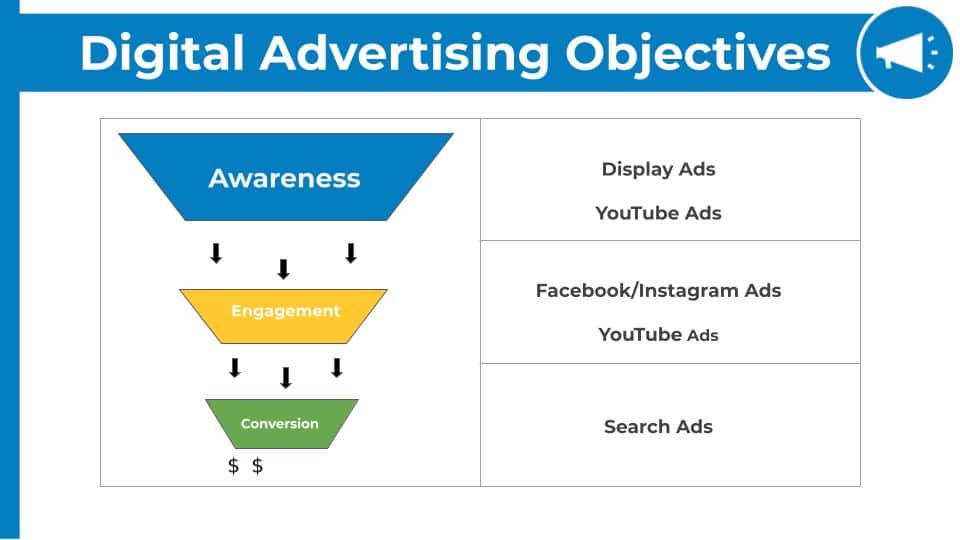Digital Advertising: The Super Bowl Spot of Online Marketing
Big brands have always upped their game on entertainment value when it came to Super Bowl commercials - whether it was Bryan Cranston putting a sugar-free spin on The Shining, or taking an introspective look at Post Malone’s buying decisions. But what about the price tag? Fan viewing patterns are rapidly shifting from cable to streaming services. Following them out the door are the ad revenues and sky high price tags for what was once considered the golden goose of ad spend.
In a landmark move, Budweiser has even decided to take themselves out of running for a Super Bowl commercial slot for the first time in 37 years. According to the company, they will be redirecting those advertising dollars to support COVID-19 vaccine awareness and education.
Ad Revenue Shifts Online
According to Google, Since 2015, traditional linear TV viewership of the Super Bowl is down 14 percent, while digital streaming increased by 200 percent from 1.3 million to 2.6 million. A similar uptick can be seen for digital advertising.
Find out more about Vendasta’s white-label digital advertising software and services
Online advertising revenue in the United States from 2007 to 2019
(in billion U.S. dollars)

Source: Statista
On the opposite side of the coin, Digital Advertising Sales Engineer for Vendasta, Mike Vossen, predicts up to a 20 percent annual reduction in cable ad revenue for the Super Bowl in the coming years.
“Super Bowl used to be the holy grail for ad spend traditionally in legacy media,” Vossen says. “A 30-second spot would cost upwards of $1 million, but since mid-year 2020, globally more money is being spent on digital ads than anywhere else, rapidly outpacing these commercials. ”
With this shift in traditional spending, where should agencies, advertisers and partners turn their attention? With the landscape continually evolving it’s a moving target but here are some of best practices and emerging technologies to consider.
The Next Big Thing
Wearable tech and smart appliances are easily the all-stars of the digital advertising game. Whether it’s a smartwatch, your new thermostat or a washing machine that connects to your smartphone, information collected from these devices isn’t yet heavily regulated making it a top commodity for marketers.
“These days they call it the data economy, what would be called unstructured or surplus data is a multi-billion dollar industry,” Vossen says. “This means advertisers will be able to market much more effectively and accurately to you.”
Advertisers can gain insights like the ambient temperature in a person’s home, what someone’s resting heart rate is at night while they sleep or how often they go grocery shopping. Someone who burns their toast in their smart toaster every morning could be considered lazy or forgetful. All of these data points are helpful tools to better tailor ad campaigns, build awareness, and keep brands top of mind when a consumer is ready to make a purchase.
Types of Digital Ads
There are four main types of digital ads:
- Google and Bing search ads
- Facebook and Instagram ads
- Display ads
- YouTube ads

Search ads are the most popular of the group. Their pull-based marketing technique steers individuals who have already shown an intent to buy by searching for a particular topic, service or product. Other options follow a push-based marketing model with ads popping up into a person’s social media feed, on a website display and in the pre-roll for a YouTube video, all based on a range of different demographic data.
“Push-based ads will target someone based on gender, age, interests, browser behavior, credit scores, personal income, and ethnicity to name a few,” Vossen says. “These individuals are much less likely to take an action on that ad but it doesn’t mean it’s not valuable. They are often a fraction of the cost and have substantially better targeting.
“Before people get to the point of search, they have a short-list of providers, consciously or subconsciously that they want to use. If you can influence them before they can even get to that space, where it’s the most competitive, highest cost and least targetable, you’re getting a leg up on the competition.”
Display ads have been around since 1994 for this exact purpose, but can sometimes be viewed as the antiquated underdog of the pack. Even though they may not be the cool kid on the block anymore, Vossen suggests they can be a marketers secret weapon with highly targetable results. Overall, it’s recommended a strategic combination of the different ad mediums should be used to get the best results for a client.
Long Game vs. Short Game
The length of a campaign is equally as important as the type of advertising you choose.
“What you really need from an ad campaign are accurate, measurable, attributable results,” Vossen says. “If you look at it like a formula and I have X+Y=Z, but I’m not given any of those variables, it becomes very complicated to solve the problem. When we run campaigns over a longer period of time, we can isolate each of those individual values, so the equation then becomes 1+2=Z, and much more simple to solve.”
Vossen recommends an ideal campaign length of 12 months, with a minimum commitment of three months. By giving your campaign time to build momentum you also insulate it from events that could greatly impact the accuracy of the results, the pandemic being a prime example.
“If you had a restaurant running a one-month digital ad campaign that kicked off right at the onset of the pandemic, you’re not going to get an accurate read on who the real audience is for that client because of the massive macro societal shift that took place,” Vossen says.
When we think about ad campaigns, you might imagine flying an airplane. The aircraft is better piloted by a human being during take off and landing, but the minor course corrections needed to get you on the most efficient path to your destination are best on auto-pilot.
“By running a campaign over a longer period we give the ‘autopilot’ much richer data for course correction, offering more success for clients than shorter one-off pushes,” Vossen says.
Tailoring the Approach to Best Suit a Client
“Ads are half about delivering leads, but the other huge chunk of it is growing yourself as a trusted marketing expert with that client,” Vossen says.
Rather than prescribing a proven one-size-fits-all strategy to find success, advertisers should get a clearer picture of the client’s needs before targeting their ideal audience.
It builds trust and creates a relationship that will help you with that client down the road. I always start with the client’s definition of success, how they value that success and what actions they take based on those outcomes to create an approach that ticks all of the boxes.
Few outside of the big brands can afford a Super Bowl-sized ad spend, but digital ads are certainly more accessible for small-and-medium-sized businesses (SMBs).
“When determining how much a client should spend on a campaign the rule of thumb is typically 20 percent of the revenue they’re hoping to gain,” Vossen says. “But I would encourage our partners not to think in such black-and-white terms. By capitalizing on the expert insights gained about a client’s audience you can better tailor future campaigns, alternative solutions, and even adjust a business model based on who their customers are.”
Get On or Get Out
These days digital ads are a must. At Vendasta we’ve seen a tremendous increase in demand over the past year.
“In the first three months of the pandemic alone, ecommerce website adoption shot up more in that short period than it had in the past 15 years,” Vossen says. “These days it’s less about should you do it and more about when you do it.”
Businesses that haven’t pivoted to a digital model in some capacity will have a much harder time of catching up to the rest of the pack and staying alive.
“Twenty percent of small businesses, with 50 or fewer employees have seen significant decline in revenue or are even closing their shop doors for good, solely because they are resistant to change,” Vossen says.
Globally, there’s an army of SMBs waiting for support to either make the leap or fine tune their digital ad game. With Vendasta’s platform it’s easier than ever to deliver and guide your clients through the solutions they need to learn more about their customers, reach a wider audience and boost their bottom lines.


